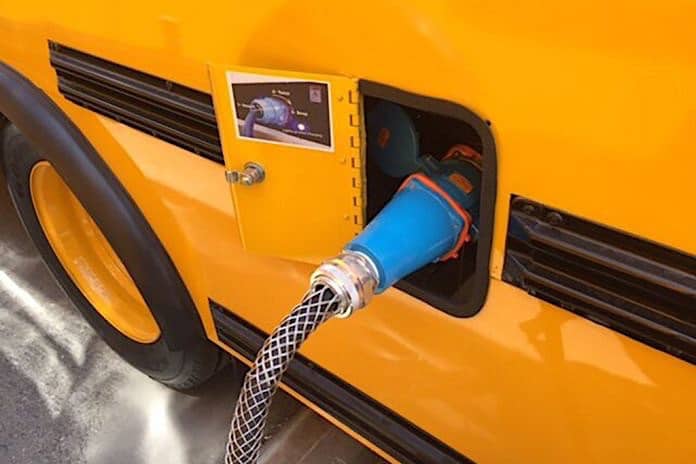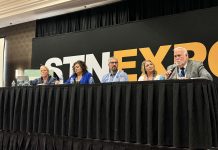The Center for Transportation and the Environment (CTE) recently held its second webinar of the three-part series, “Electrifying Your Bus Fleet,” with a focus on how two school districts are charging their school buses.
The first webinar last month covered the technology of electric buses.
Representing CTE during the May 7 event were Executive Director Dan Raudebaugh along with Erik Bigelow, a senior engineering consultant. Included in the presentation were Brent Johnson, co-founder of Sage Energy Consulting, and Ari Kahn, an electric vehicle project specialist from Con Edison power company in New York state.
When gearing up for the transition to electric, Bigelow said knowing which kind of chargers are the best fit for your operation is crucial.
“Chargers can be either AC or DC. Batteries are DC, and the grid power that you’re bringing in is AC, so a device is needed to translate that AC power into DC for storage in the batteries,” he advised. “The distinction with the type of charger is where that DC power being produced.”
In AC charging, the DC conversion takes place on a school bus through the motor converter or a dedicated charger on board. Typically, this method has a lower unit cost and a normal power rating of about 7 – 19 kW. For DC charging method, the conversion takes place off the bus on dedicated stand-alone hardware. This is more expensive, requiring 480-volt, three-phase power. The power varies between 50 – 150 kW. “It’s important to sync that with what power your vehicle can actually accept,” added Bigelow.
He also provided a brief overview of charge management. “As your fleet grows, it’s worthwhile to keep vehicle-to-grid (V2G) in mind,” Bigelow suggested.
“At its most basic, charge management, sometimes called V1G, is a system to control how your vehicle is charged to accommodate outside constraints and optimize your needs. Those constraints could be cost, a grid limit, or balancing the use of shared chargers.”
Johnson of Sage Energy Consulting spoke about electrifying fleets and mitigating electricity costs. Based in California, Johnson is experienced in providing independent energy planning and project management. He outlined steps needed to put the infrastructure in place, using Redwood City Unified School District in northern California as an example. Those steps include planning infrastructure, projecting operating costs, training employees, monitoring and optimizing the buses and energy systems.
“Redwood City had to commit to how many buses they were going to buy over a period of time, and Pacific Gas and Electric made a commitment to pay for the service upgrades at the site on the utility side and also pay for a portion of the chargers. Redwood received a Proposition 39 grant for four [Micro Bird small] buses and is targeting 10 buses over the next five years. He also noted other charging constraints that may come into play. For example, California’s Proposition 39 requires that the chargers have V2G capability.
On the East Coast, Ari Kahn has been working in White Plains, New York, on a V2G project.
“My job at Con Edison is to test new electric vehicle business models,” Kahn said. “We’re very involved in V2G, with the goal of producing revenue for school bus operators and providing a new energy resource for the grid.”
Kahn began working with White Plains Public Schools in 2018, where five eLions from the Lion Electric Company are running via a partnership with school bus contractor Durham School Services, Con Edison, V2G technology provider Nuvve Corp, and project manager First Priority Greenfleet.
“These were the first five full-size electric buses in New York state, so reliability was a major concern. Thankfully, the buses have been very reliable, and National Express has experienced low maintenance costs,” Kahn said. “Additionally, the community was very excited about the buses, and refer to them as the ‘singing school buses’, because of the song played so that people can hear them coming.”
Kahn also discussed site layout, hardware and on-demand charges versus overnight charging. He summed up by reiterating that e-buses were functioning well for pupil transportation and that V2G has several advantages, namely reducing electric bills, obtaining grid revenue, and providing an emergency power source.
The third webinar in the series on funding electric programs will be held Thursday, June 4, at 11 a.m. Pacific.
Related: School Buses Among New York City Fleet to Go Electric
Related: Lion Delivers 1st Electric School Buses from Calif. Energy Commission School Bus Program
Related: Daimler Trucks Div. to Deliver 50 Fully-Electric School Buses for Virginia
Related: Maine Bill Calls for Increased Funding of Electric School Buses
















